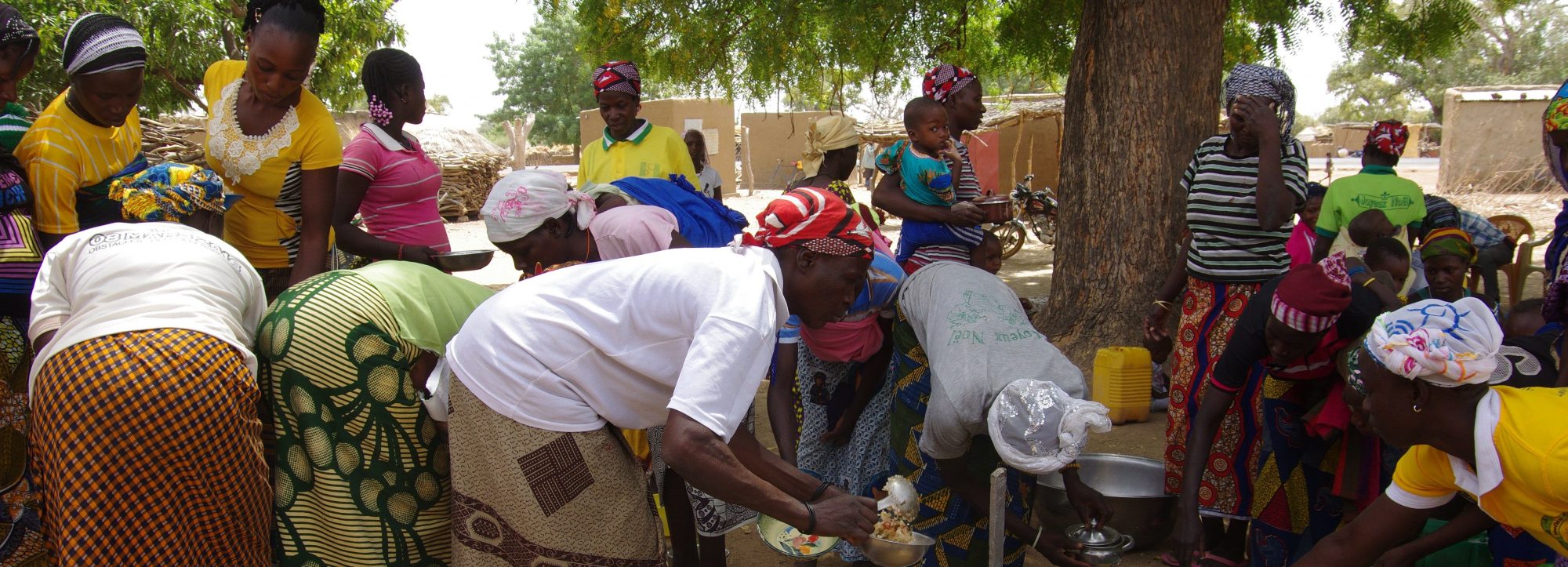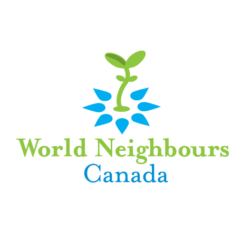In April, 2013, I had the good fortune to visit Nepal to view the work of a Nepalese NGO, Tamakoshi Sewa Samiti (TSS). I travelled with Dale Dodge of World Neighbours Canada (WNC) and Jack Nicholson of the Rotary Club of Aldergrove – together with the Canadian International Development Agency (CIDA), we work with TSS to support water systems, sanitary latrines and smokeless ovens in Nepal.
In the villages in Nepal with which we work, the water is carried from remote sources, usually by the women and children. Individuals might spend the entire day carrying water for the family needs. The basis of our work is to provide an adequate water supply – the Canadians provide funds for materials, TSS provides organization and technical expertise, and the villagers provide the labour for construction!
The villages that we visited contained 30-60 houses, totalling 200-300 people. The entire village had agreed to apply for assistance from TSS. The is currently a backlog of applications, and not all can be accepted. The villagers formed a water system committee of 9 people, and contributed funds towards the future maintenance of the system. In one village we visited, an initial contribution of 700 rupees (a little more than $8 Canadian) and a monthly fee of 50 rupees. The water system is designed to need minimum maintenance, and until needed the funds are used for micro-credit, but only for the villagers themselves.
The water systems get the water from natural springs. They are gravity fed (usually with a reservoir to ensure supply) and supply water through standpipes in the village. Villagers still have to walk to get water, but with the system it is only a matter of minutes. Often, there is also now water for greater farming efforts.
TSS itself is based in Manthali in Ramechhap province, east of Kathmandu. I found roads in Nepal often primitive and rough – it took us 8 hours to drive the 200 kilometers from Kathmandu to Manthali. The next day, we were able to drive to our first visit – but it took about an hour to go 10 kilometers. Other villages we had to walk to, as they were “beyond the end of the road”.
At our first visit, Tekanpur, we were greeted by the villagers and shown the water system. Here, the villagers had dug a 10 kilometer, 1 meter deep trench, laid the water pipe and refilled the trench – all by hand! A reservoir near the source and standpipes in the village completed the system. In Tekanpur, the system is turned off at 8 each night and back on at 8 in the morning, to allow the reservoir to refill. What previously took the women 6 hours each day can now be done in an hour. In each village, Dale asked what they did with the extra time each day, and the women replied that they work in the fields, increasing the household productivity.
Our second stop that day was at Bhalukhop village, about an hour and a half walk beyond Tekanpur. The original water for this village of 31 families was only a 10 minute walk, but the source so inadequate that it could take up to an hour to fill one water container. This had led to animosity amongst the families as they fought over water. Two years ago, with assistance from Canada and TSS, they installed a water system with a reservoir and 5 outlets in the village. There is no road into Bhalukhop, so of course all of the materials for the water system was carried in by the villagers. Again, for the villagers, less time to get water each day and more time for other work
The next day we travelled to Sotormu village. Initially, we thought that we would have to walk in – 4 ½ hours up through the Deurali Pass at 2705 meters and then another hour down the other side to Sotormu at 2460 meters. Fortunately for me, at Shivalaya as we were preparing to start our hike to Deurali, the locals advised that the road to Deurali was actually passable. Then at Deurali we learned that the road in to Sotormu was also passable. Needless to say, I was much relieved at not having to walk, although the drive took 3 hours. As in each village, we were greeted with floral necklaces, shown the water system and feted with a meal. (Only we visitors ate, surrounded by curious villagers of all ages.) We noted that Sotormu is in the Sherpa area of Nepal, perhaps the reason that they had 5 women on their 9 member water system board.
The third day we visited Lisekhani village – two hours to drive 25 kilometers from Shivalaya, then on foot from Bhitari (at 1000 meters) to Lisekhani (at 2250 meters). We were the first foreigners ever to visit the village, so the children had been let out of school for the day to join us! Here the source is so strong, that the water system runs continually, with no taps at the outlets. Once again, warm greeting by the villagers, proud showing of the water system (as well as the smokeless ovens and sanitary latrines) and food for the visitors.
In addition to water systems, Canada and TSS provide materials and technical assistance for sanitary latrines and smokeless ovens. In these remote villages with poor water supply, there were often not latrines. Each household that wants one is assisted with materials and advice, with the family doing the construction – a basic ‘outhouse’ with a concrete floor and ‘Turkish toilet’ connected to a septic pit. With water available from the village system (carried by hand of course), the trap in the toilet can be kept full of water and there is no smell associated with the latrine.
Cooking in these villages is often an open fire in the centre of the one-room house. This leads to medical eye and lung problems. Canada and TSS again provide the materials and technical assistance for the family to build what appeared to me as a small, clay barbecue – but with an outside chimney. Less eye and lung problems, less wood needed for cooking – but less heat in the house in winter.
TSS was one of only 25 NGOs in Nepal 25 years ago – there are now over 32,000! In addition to the work already described, TSS was instrumental in establishing a hospital and a credit union in Manthali. Although they are now three separate organizations, TSS still works closely with the others. Profits from the credit union assist the hospital, and the hospital provides 2000 rupees of ‘free care’ to each credit union member each year.
The relative poverty of the villages we visited was obvious, but I was very impressed with the work of TSS and the success of the approach – providing the materials and having the villagers themselves do the work. On our travels, we saw systems that had been ‘given’ to the villages and no longer worked, apparently because there was no village ownership. All of the water systems done by TSS were constructed by the villagers involved and are maintained by them – ownership can be a great incentive to maintaining the system!
I think that the partnership of WNC, Rotary and CIDA, working through TSS, is a great success. We are actually helping those in need in Nepal to improve the quality of their lives. Unfortunately, CIDA is not participating past March, 2013, but I believe that if WNC, Rotary and TSS maintain their partnership, we can continue our success. The need still exists – we can be part of the solution.


